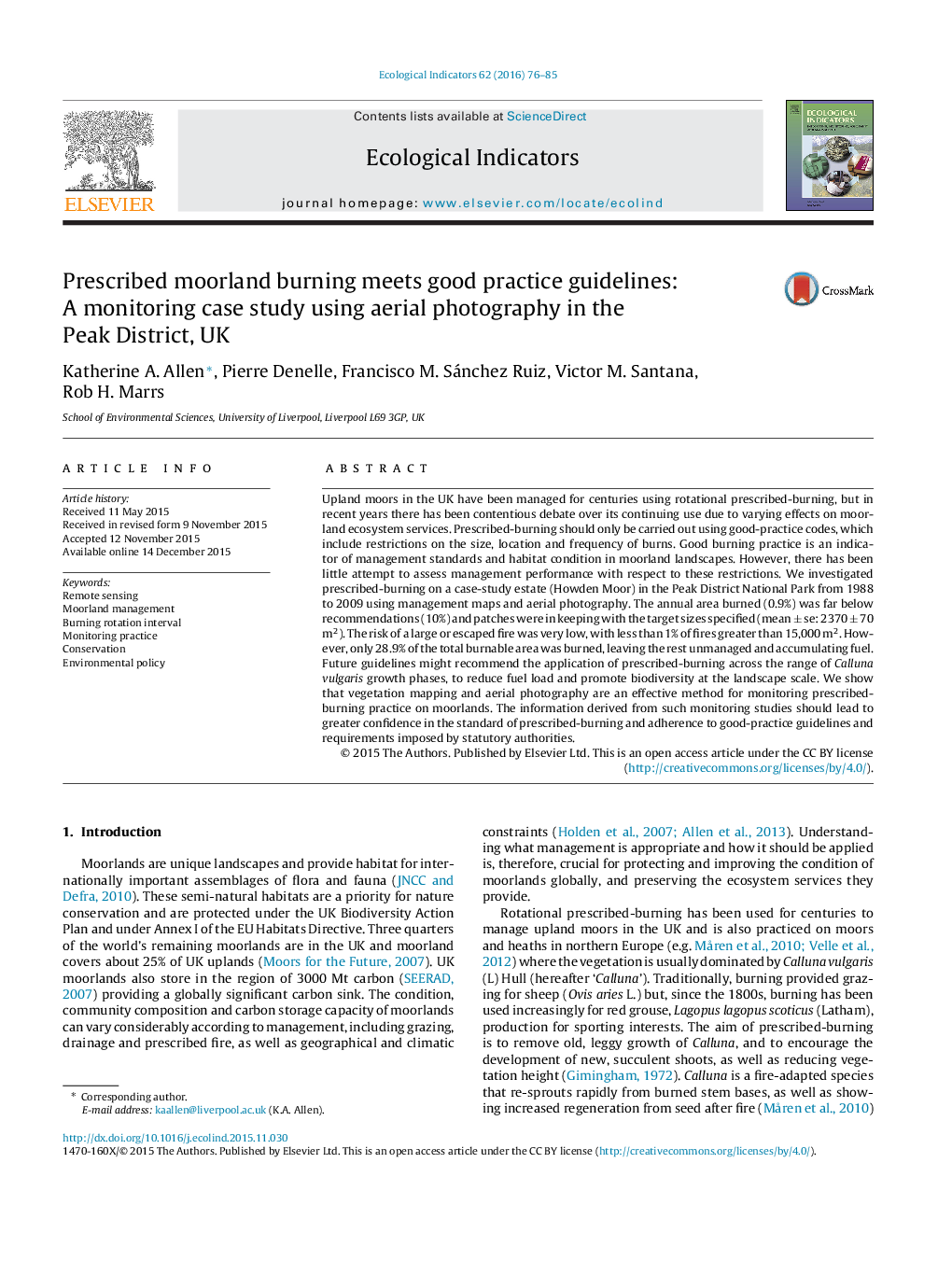| Article ID | Journal | Published Year | Pages | File Type |
|---|---|---|---|---|
| 6293919 | Ecological Indicators | 2016 | 10 Pages |
â¢Aerial photography provided an effective tool for monitoring prescribed-burning management.â¢Over 70% of the burnable area was never burned during the 22-year study period, suggesting fuel accumulation will be high in these areas, with an increased risk of wildfire.â¢Burning rates (0.9% per year) were far below current recommendations from the statutory conservation agency (10% per year).â¢Annual area burned has increased since 1988 but has fluctuated through time and remains below recommended levels.â¢Burn patches were in keeping with the target sizes and the risk of a large or escaped fire was very low.
Upland moors in the UK have been managed for centuries using rotational prescribed-burning, but in recent years there has been contentious debate over its continuing use due to varying effects on moorland ecosystem services. Prescribed-burning should only be carried out using good-practice codes, which include restrictions on the size, location and frequency of burns. Good burning practice is an indicator of management standards and habitat condition in moorland landscapes. However, there has been little attempt to assess management performance with respect to these restrictions. We investigated prescribed-burning on a case-study estate (Howden Moor) in the Peak District National Park from 1988 to 2009 using management maps and aerial photography. The annual area burned (0.9%) was far below recommendations (10%) and patches were in keeping with the target sizes specified (mean ± se: 2370 ± 70 m2). The risk of a large or escaped fire was very low, with less than 1% of fires greater than 15,000 m2. However, only 28.9% of the total burnable area was burned, leaving the rest unmanaged and accumulating fuel. Future guidelines might recommend the application of prescribed-burning across the range of Calluna vulgaris growth phases, to reduce fuel load and promote biodiversity at the landscape scale. We show that vegetation mapping and aerial photography are an effective method for monitoring prescribed-burning practice on moorlands. The information derived from such monitoring studies should lead to greater confidence in the standard of prescribed-burning and adherence to good-practice guidelines and requirements imposed by statutory authorities.
